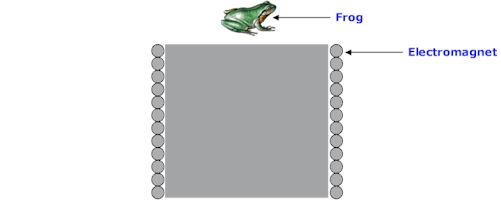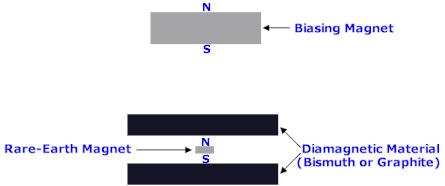What is diamagnetism, the following AOMAG Magnetics through the data compilation gathered what is diamagnetism related information, let's take a look together!
A diamagnetic substance is one whose atoms have no permanent magnetic dipole moment. When an external magnetic field is applied to a diamagnetic substance such as bismuth or silver a weak magnetic dipole moment is induced in the direction opposite the applied field. All materials are actually diamagnetic, in that a weak repulsive force is generated by in a magnetic field by the current of the orbiting electron. Some materials, however, have stronger paramagnetic qualities that overcome their natural diamagnetic qualities. These paramagnetic materials, such as iron and nickel, have unpaired electrons.
Some Diamagnetic Elements
- Bismuth
- Mercury
- Silver
- Carbon
- Lead
- Copper
Some Ferromagnetic Elements
- Iron
- Nickel
- Cobalt
- Gadolinium
- Dysprosium
Some Paramagnetic Elements
- Uranium
- Platinum
- Aluminum
- Sodium
- Oxygen
Diamagnetic Levitation
Diamagnetic Levitation occurs by bringing a diamagnetic material in close proximity to material that produces a magnetic field. The diamagnetic material will repel the material producing the magnetic field. Generally, however, this repulsive force is not strong enough to overcome the force of gravity on the Earth's surface. To cause diamagnetic levitation, both the diamagnetic material and magnetic material must produce a combined repulsive force to overcome the force of gravity. There are a number of ways to achieve this:
Placing Diamagnetic Material in Strong Electromagnetic Fields
Modern Electromagnets are capable of producing extremely strong magnetic fields. These electromagnets have been used to levitate many diamagnetic materials including weakly diamagnetic materials such as organic matter. A popular educational demonstration involves the placement of small frogs into a strong static electromagnetic field. The frog, being composed of primarily water, acts as a weak diamagnet and is levitated.

Placing Diamagnetic Material in Strong Magnetic Fields
Advancements in the development of permanent magnets and diamagnetic materials such as pyrolytic graphite have produced a simple method of diamagnetic levitation by simply placing a thin piece of pyrolytic graphite over a strong rare-earth magnet. The pyrolytic graphite is levitated above the magnet.

Placing Magnetic Material in Strong Diamagnetic Fields
Developments in superconducting materials have produced an easy and dramatic method of demonstrating diamagnetic levitation. A superconductor will not allow a magnetic field to penetrate its interior. It causes currents to flow that generate a magnetic field inside the superconductor that balances the field that would have otherwise penetrated the material. By placing a strong permanent magnet above a superconductor, the magnet will levitate.

Placing Magnetic Material in Diamagnetic Fields with a Biasing Magnet
The last method, and most easily duplicated by the average individual, uses a combination of readily available rare-earth magnets and diamagnetic material such as carbon graphite or bismuth. Through the use of a biasing or compensating magnet, a small rare-earth magnet can be levitated above a piece of diamagnetic material. For added stability, the small magnet is generally placed between two pieces of diamagnetic material. Below is a diagram of this method:

Diamagnetism means that the material will not exhibit significant magnetization under the action of an external magnetic field, i.e., it will not be magnetized. Materials with strong antimagnetism do not show significant magnetization under the action of a magnetic field, a property that is valuable in certain applications, for example, in medical applications, magnetic resonance imaging (MRI), non-magnetic materials are required to avoid interference with the magnetic field to ensure the accuracy and stability of the imaging. In magnetic sensors, antimagnetic materials are commonly used to manufacture magnetic sensors, which are widely used in automation control, electronic equipment, transportation and other fields to detect and measure the strength and direction of magnetic fields.





